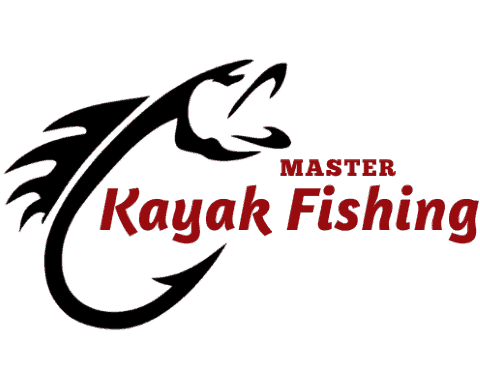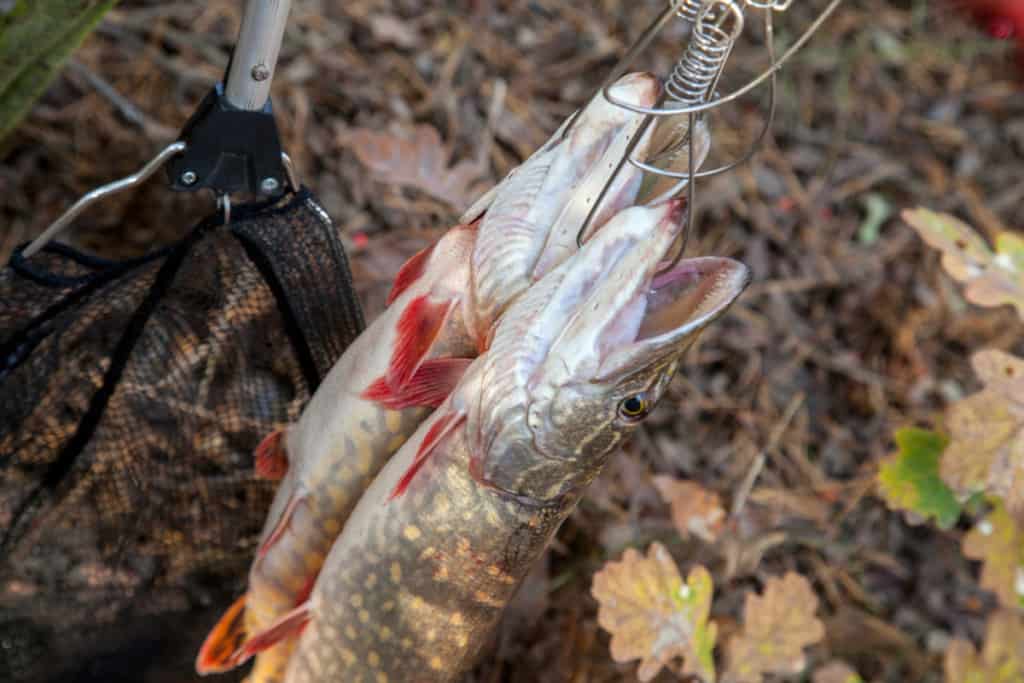
Congratulations! Youʻre catching fish! You can be happy with what you caught and just paddle in, but if youʻre looking to catch a few more or simply have a long paddle back, youʻre going to want to find a way to keep your fish fresh. Using a fish stringer is a great way to accomplish this with little cost.
How do you use a Fish Stringer on a Kayak?
To use a fish stringer on a kayak, attach a small length of rope from your kayak to the water, Tie your stringer to the rope. To attach fish, take your stringer out of the water and run the stringer or looped hook through the gill and out the mouth. Return to the water.
Itʻs that simple.
Before we call ourselves experts on the subject, there are still a few more things we need to know.
There are several types of stringers. There are even alternative ways to keeping your catch fresh that may be even better than a stringer, but thatʻs for you to decide. Letʻs dive into more detail so that we may learn all there is to know to keep your catch fresh.
Different types of fish stringers
The first thing we need to know is what the difference is between the different types of stringers. Like all things, each one plays a particular role for which it was meant.
Polyethylene Stringer
This is the simplest stringer on the market. Made with Polyethylene rope, sometimes paracord or other material. One one end has a metal loop the other end has a metal stake.
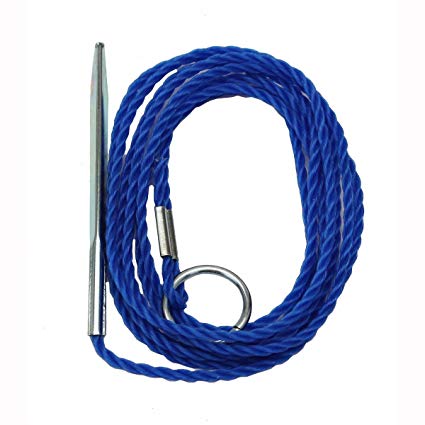
The end with the metal stake runs through the gills of your caught fish and out of the mouth. The rope is then pulled through until the metal ring is resting at the gills. You can run multiple fish on the same line this way.
The stringer can easily be tied to the kayak by tying the end with the metal stake directly to the kayak, or using another length of rope as a leader and tying to that. I tend to do the second option because it allows me to more easily remove the stringer from the rope as opposed to the boat directly so that I can string on more fish.
Stainless Steel Clip Stringer
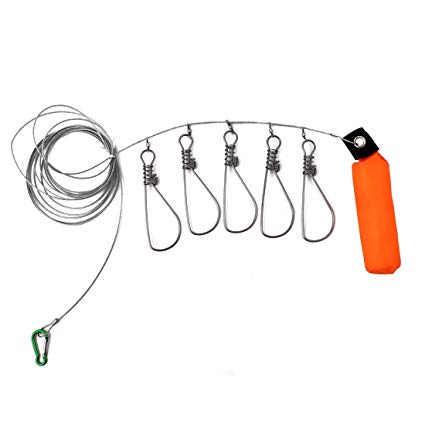
The next most common stringer looks like a chain with clips hanging off it. This is a clip stringer. The clip stringers are a little tougher than their rope counterparts and make it much easier to attach a new fish to the stringer without having to untie it every time.
To attach them to my kayak, I will tie a length of rope from my kayak to the water with a hoop knot in the rope at the water end. Then I simply clip the metal stringer onto the hoop knot and Iʻm ready to go.
In order to attach a fish to the stringer, just unhook the clasp, run it through the gills or bottom of the jaw and out through the mouth. Gently lower the stringer back into the water and continue on with your fishing adventure.
Heavy Duty Square End Clip Stringer
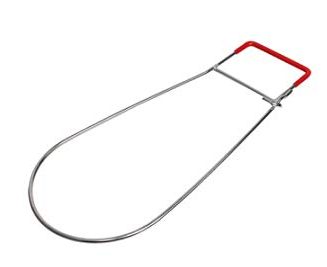
These stringers are very similar to the clip stringer on the chain, but this is for the big game. The large fish that just wonʻt fit on any normal stringer.
These work just like the clip stringer for smaller fish. Unhook the clasp and feed the wire through the gills or lower jaw and then out the mouth. Secure the big game clip stringer to your kayak by running a length of rope through it and tying it off to the boat.
ForEverlast G2 Pro Stringer
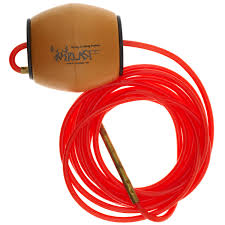
This is a great stringer for a Kayak. It has a built-in float, which keeps your fish from getting too deep and tangling themselves up in underwater structure. It also has a quick release which allows to more easily add more fish to the stringer.
The stringer itself is made with a snag-free cable which allows fish to slide more freely on the stringer, causing less damage to your catch. If you do end up deciding to throw back a catch because it was too small, your fish is more likely to survive if you use this stringer.
This stringer is attached to your kayak by tying it off with a rope. Fish are added onto the stringer pretty much the same way as the polyethylene rope stringers.
Pros and Cons to Fish Stringers
There are many advantages to using a fish stringer, but they come with some disadvantages as well.
When it comes to keeping your catch fresh while fishing from a kayak, a fish stringer would be hard to beat. All youʻre pretty much doing is tying up your fish to your kayak. It costs almost nothing.
The benefit of that is you get to use the ocean to keep your fish alive and fresh. No work needed on your part.
Youʻre also taking advantage of a kayakʻs limited space by storing your catch overboard as opposed to a cooler stored on the kayak. If you have a small kayak, you know how sacred every inch of space is on your kayak.
Nothing ever seems to be perfect though. Where a fish stringer can be convenient it can also be an annoyance.
Having a stringer of fish dragging behind you as you paddle back can really slow you down. If youʻre trolling, youʻre lure may not be getting the action it needs because you are going to slow. Sometimes itʻs much easier to haul your catch aboard and then begin your paddling.
Also, I fish in the ocean. My mind starts to get to thinking sometimes. That stringer of fish is like one big live bait trolling lure. Maybe I might get a visit from a shark or two. Hope theyʻre not BIG!
Some stringers can also be a little rough on your fish. If you know that the fish is a keeper, then this may not be much of an issue. There are times that you make a mistake and end up realizing you’re much better off trying to throw a fish back. A polyethylene rope stringer or clip stringer can cause damage that can end up killing the fish.
Alternative options to fish stringers for kayak fishing
There is more than one way to keep your catch fresh. Just like there are multiple types of stringers, there are multiple ways to keep your catch fresh on your kayak.
COOLERS
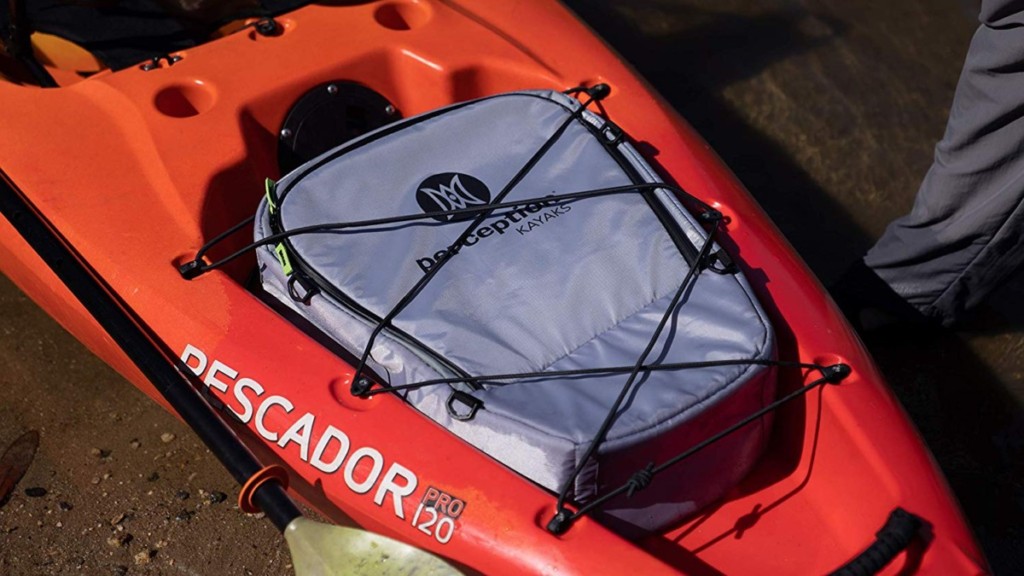
One of the most common ways to keep your catch fresh is by using a cooler. Getting your catch on ice right away is the ticket to fresh tasty fish.
Most kayaks have a rear compartment behind the seat where a cooler can be stored. They can be used in addition to the milk crate for storage, or they can be stored in the milk crates themselves. Make sure you check your dimensions and use a quality, soft-shelled cooler that can conform to weird spaces.
Couple drawbacks to the cooler beside the fact that they take up space are that they need ice and they get stinky and dirty. It’s a drag to always have to keep ice on hand, especially out on a kayak. Not to mention the weight all this adds.
Fish are also really stinky and slimy. Store a few in a cooler and that fish smell is not coming out.
FISH BASKETS
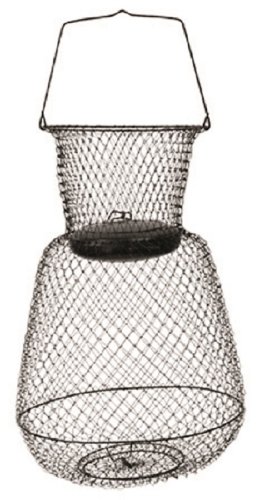
Another method used to keep fish fresh is the fish basket. Fish baskets are made of wire mesh and look like their name implies. They are tied off the kayak like a stringer and left in the water. Your catch is placed into the basket and allowed to swim freely inside the basket for the remainder of your time.
Fish baskets are difficult to paddle with. It is much easier to haul them onto the boat before beginning to paddle. They also have the chance of getting separated from you, whereas a cooler does not.
FRONT HATCH
I donʻt really use my front hatch for much, but lately, I have been enjoying the idea of using it as a place to store my catch.
All you need is an insulated shopping bag, velcro it to the bottom of the boat inside the hull so it will not move around. Fill it with frozen water bottles (the bags are not waterproof, if you fill them with ice, the melted ice would leak into the hull of your kayak) and throw your catch on top.
Itʻs a little tricky getting into the hull, but it is manageable.
There you have it, a built-in cooler for a couple of bucks.
Keep That Catch Cool
I hope we were able to pass on some good tips for keeping your catch fresh while fishing from a kayak. As you can see, there are many options available to the kayak fisherman, even though theyʻre fishing from a tiny kayak.
If this topic is even an issue for you, congratulate yourself. You are catching fish. You are on the path to providing for yourself, your family and connecting closer to nature in the process.
Happy Fishing! Aloha.
